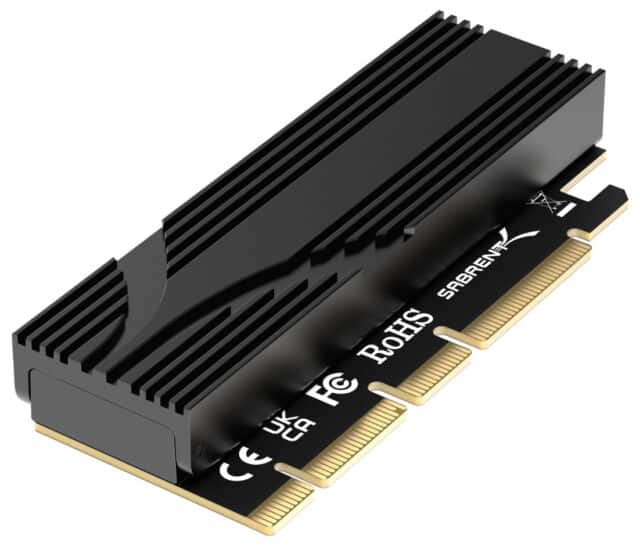Sabrent launches EC-TFPE -- an enhanced M.2 NVMe SSD to PCIe x16 add-in card for Gen5 solid state drives

Sabrent has recently upgraded its popular NVMe M.2 SSD to PCIe Card with the launch of the new EC-TFPE model. This advanced tool-free PCIe to M.2 card is tailored to accommodate the latest Gen5 SSDs (such as this one), ensuring compatibility with the newest technology in the market.
The Sabrent M.2 NVMe SSD to PCIe x16 Tool-Free Add-In Card (AIC) with Aluminum Heatsink (EC-TFPE) is an evolution of the prior EC-PCIE model. It is specifically engineered to support Gen5 SSD speeds while maintaining a cool and quiet operation, thanks to its built-in aluminum heatsink and thermal padding. The card's tool-free design facilitates easy SSD installation, eliminating the need for extra screws and steps.
Featuring an x16 physical connector, the EC-TFPE offers physical stability and is compatible with some x4/x8 PCIe slots. It connects at x4 PCIe electrically, maximizing SSD performance. Importantly, the card is backwards compatible with previous PCIe generations and is poised to work with future PCIe generations up to 5.0 speeds.
The EC-TFPE supports M key NVMe SSDs and older B+M key PCIe (AHCI/NVMe) SSDs in various M.2 form factors (2230 / 2242 / 2260 / 2280), providing flexibility for both new and old systems. Full NVMe support, which requires motherboard compatibility and a newer operating system, is recommended. The card is compatible with Windows, macOS, and Linux.
While the EC-TFPE is designed to work with older systems, Sabrent advises ensuring that the host system is NVMe-capable. The card will function in any PCIe slot at its rated speed, up to a maximum of 5.0.
The Sabrent M.2 NVMe SSD to PCIe x16 Tool-Free Add-In Card (AIC) with Aluminum Heatsink, M.2 PCIe Adapter for Gen5 SSDs PCIe 5.0, is currently available for purchase from Amazon here for $35.
Please note: Some of the above links may be affiliate links, meaning we, or our writers, may receive payment if you purchase one of these items (or other items) after clicking on them.
